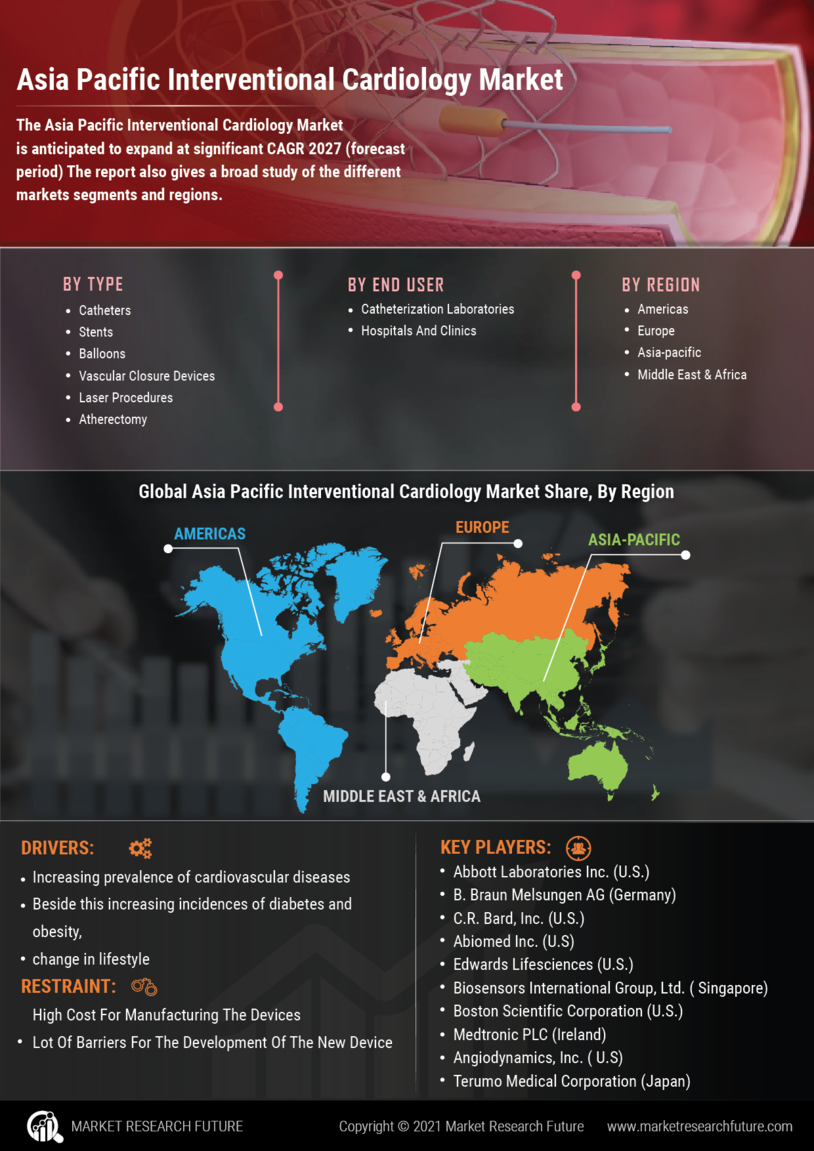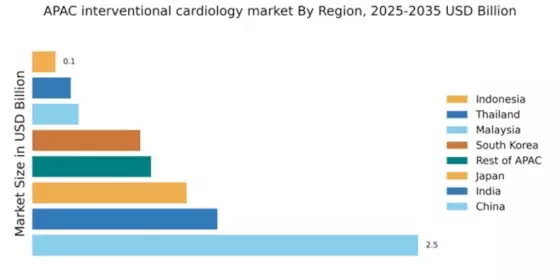China : Rapid Growth and Innovation
China holds a commanding market share of 2.5 in the interventional cardiology sector, driven by increasing cardiovascular disease prevalence and a growing aging population. Key growth drivers include government initiatives to enhance healthcare access, significant investments in medical infrastructure, and the adoption of advanced technologies. Regulatory policies are becoming more favorable, promoting innovation and faster approvals for new devices, which is crucial for meeting rising demand.
India : Growing Demand and Investment
India's interventional cardiology market is valued at 1.2, reflecting a robust growth trajectory fueled by rising disposable incomes and increased awareness of heart health. The demand for advanced cardiac procedures is on the rise, supported by government initiatives like the Ayushman Bharat scheme, which aims to provide affordable healthcare. The expanding healthcare infrastructure and a surge in private investments are also pivotal in shaping the market landscape.
Japan : Innovation and Quality Care
Japan's interventional cardiology market is valued at 1.0, characterized by a strong emphasis on technological advancements and high-quality healthcare services. The aging population and increasing prevalence of heart diseases are key growth drivers. Government policies support research and development in medical technologies, ensuring that Japan remains at the forefront of innovation in cardiology. The market is also witnessing a shift towards minimally invasive procedures, enhancing patient outcomes.
South Korea : Advanced Healthcare Infrastructure
South Korea's interventional cardiology market, valued at 0.7, is experiencing significant growth due to its advanced healthcare infrastructure and high patient demand for innovative treatments. The government is actively promoting health technology assessments and reimbursement policies that favor advanced cardiac devices. The competitive landscape includes major players like Medtronic and Boston Scientific, which are well-established in the region, driving innovation and market expansion.
Malaysia : Investment in Healthcare Development
Malaysia's interventional cardiology market is valued at 0.3, with growth driven by increasing healthcare investments and a rising prevalence of cardiovascular diseases. The government is implementing strategic initiatives to enhance healthcare access, including the establishment of specialized cardiac centers. Demand for interventional procedures is growing, particularly in urban areas like Kuala Lumpur, where healthcare facilities are expanding to meet patient needs.
Thailand : Focus on Patient-Centric Care
Thailand's interventional cardiology market, valued at 0.25, is expanding due to a focus on patient-centric care and increasing healthcare accessibility. The government is investing in healthcare infrastructure and promoting public-private partnerships to enhance service delivery. Major cities like Bangkok are key markets, with a competitive landscape featuring both local and international players, including Terumo and Abbott, which are enhancing service offerings in the region.
Indonesia : Increasing Healthcare Investments
Indonesia's interventional cardiology market is valued at 0.15, with growth driven by rising healthcare investments and an increasing burden of cardiovascular diseases. The government is focusing on improving healthcare access through various initiatives, including the National Health Insurance program. Key markets include Jakarta and Surabaya, where healthcare facilities are rapidly expanding, attracting major players like Johnson & Johnson and Siemens Healthineers to invest in the region.
Rest of APAC : Varied Market Dynamics
The Rest of APAC interventional cardiology market, valued at 0.77, presents diverse opportunities driven by varying healthcare needs across countries. Growth is influenced by increasing healthcare expenditures and the adoption of advanced medical technologies. Countries like Vietnam and the Philippines are emerging markets with significant potential. The competitive landscape includes both local and international players, adapting to unique market dynamics and regulatory environments.


















Leave a Comment